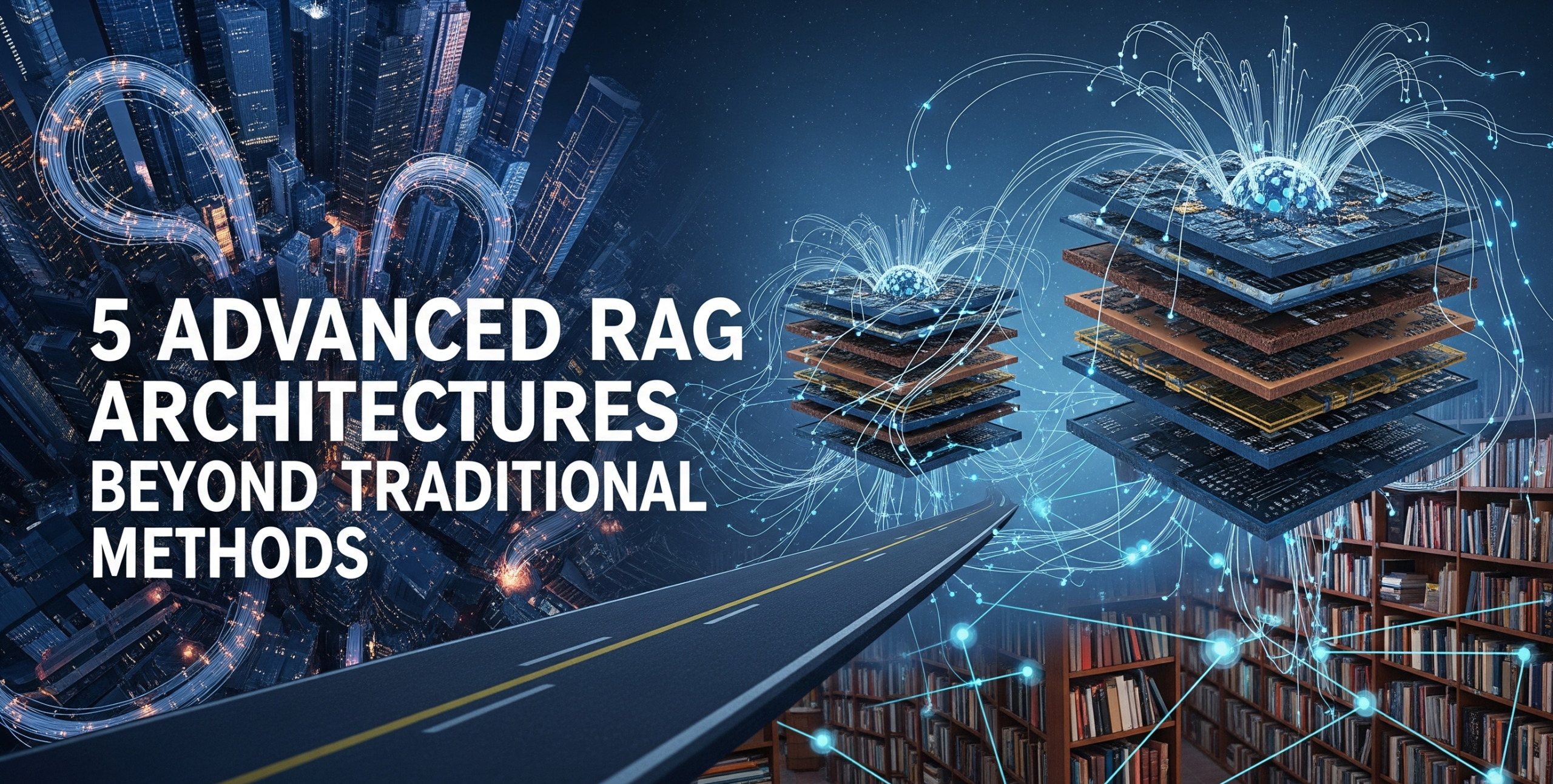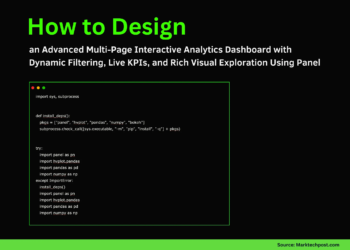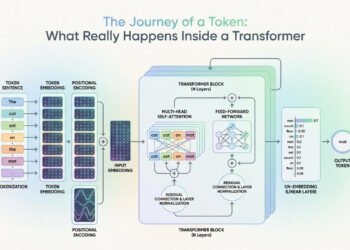
5 Advanced RAG Architectures Beyond Traditional Methods
Image by Editor | Gemini
Retrieval-augmented generation (RAG) has shaken up the world of language models by combining the best of two worlds: retrieving relevant information, and generating coherent, grounded responses. But as with most groundbreaking ideas, the first wave of RAG implementations was just the beginning.
Now, we’re witnessing a surge of innovation that pushes beyond simple retrieval and response paradigms. In this article, we’ll dive into five cutting-edge RAG architectures that go far beyond traditional pipelines, redefining how we approach context, accuracy, and dynamic information use in AI applications.
1. Dual-Encoder Multi-Hop Retrieval
Instead of relying on single-pass, shallow retrieval, Dual-Encoder Multi-Hop Retrieval dynamically layers queries to dig deeper into the knowledge base. Picture a conversational agent trying to answer, “What did the CEO of Nvidia say about AI chip shortages in 2023?” Traditional RAG might fetch related documents and generate a summary. Multi-hop retrieval, however, breaks this down: first identifying Nvidia’s CEO, then querying their public statements, and finally focusing on content that ties their comments to AI chip shortages.
Using dual encoders for both the initial and follow-up queries allows the model to maintain semantic fidelity across hops while reducing noise. One encoder handles the evolving query context, while the other scours the document index with each new step.
The result is layered relevance that captures nuance often lost in a single retrieval pass. It’s an architecture that mimics human research behavior, and that makes a huge difference in both factual accuracy and relevance. When done correctly, this method boosts answer depth while retaining clarity, especially for multi-faceted, real-world questions.
2. Context-Aware Feedback Loops
Traditional RAG systems treat generation as the final step. Once the text is generated, the system stops thinking. Context-Aware Feedback Loops introduce an iterative mechanism where the model evaluates its own responses against retrieved documents. If confidence scores are low or contradictions are detected, the model loops back, reformulates the query, and retrieves more refined sources before regenerating.
This approach borrows from reinforcement learning principles without the need for heavy reward tuning. The feedback loop is powered by lightweight confidence estimators and contradiction checkers—often themselves small transformer models. When the loop identifies weak grounding or hallucinations, it prompts the system to improve itself before presenting a final answer. This looping mechanism transforms static generation into an adaptive system. The results? Higher factual precision, better citation integrity, and more robust outputs in noisy or ambiguous data environments, especially when dealing with fast-changing data.
3. Modular Memory-Augmented RAG
Memory-Augmented RAG isn’t just about expanding retrieval scope; it’s about making context sticky. Think of a chatbot assisting with a long-term project or a research assistant working over multiple sessions. Modular memory systems allow the model to store, categorize, and prioritize retrieved chunks and generated outputs over time.
Unlike traditional static vector stores, these memories are modular: each memory segment is tagged with contextual metadata (user ID, task type, date, session goal). Retrieval modules then selectively access relevant modules instead of scanning a giant monolith. These memory cells can also be re-ranked or decayed over time, ensuring that stale information doesn’t contaminate future generations. In practical terms, this means a RAG model doesn’t just retrieve what’s most similar — it retrieves what’s most relevant right now.
What really sets this approach apart is the ability to persist memory across sessions without bloating the prompt context. Instead of appending previous interactions to each new prompt, the architecture taps into structured memory stores that evolve with use. Over time, these systems learn which data is most valuable for each user or workflow. The result? A model that acts less like a chatbot and more like a personalized assistant with history, context, and prioritization.
4. Agentic RAG with Tool-Use Integration
Agentic RAG transforms passive retrieval into active reasoning. Instead of simply grabbing documents, these systems delegate sub-tasks to tools or APIs. A single input can trigger a cascade: query a search engine, extract structured data, filter it through a Python script, and finally, generate a response grounded in both static documents and real-time data, making it ideal for tasks that demand precise data feed management.
This architecture leans heavily on orchestration frameworks like LangChain, ReAct, or custom routing modules that let the language model decide how to fetch, analyze, and integrate information. Want to compare recent earnings reports across companies? Agentic RAG doesn’t just retrieve the documents—it reads tables, uses arithmetic reasoning tools, and combines textual insights with structured outputs. The result is a model that doesn’t just retrieve and repeat; it plans, executes, and then explains.
What distinguishes agentic RAG from traditional pipelines is its autonomy and decision-making. The model isn’t just handed data; it plans its next step based on the task type, data format, or user intent. For instance, if a user asks about trending X (formerly Twitter) conversations and their impact on stock prices, an agentic system might access a X scraping API, summarize sentiment, pull in financial tickers, and then generate a market analysis—all within a single interaction.
5. Graph-Structured Context Retrieval
Flat similarity searches are increasingly limited in complex, interlinked domains like medicine, law, or financial analysis. Graph-Structured Context Retrieval introduces a knowledge graph into the loop, not just to store entities and relationships but to actively drive the retrieval logic.
In this setup, when a query is processed, the system identifies its anchor entities and uses graph traversal to fetch semantically linked documents and contextual nodes. Instead of just grabbing the top-5 cosine similarity hits, it fetches a web of documents informed by relationships, causal chains, or temporal links. Then it reconstructs a coherent narrative from that graph-induced context.
This approach is particularly powerful when the desired answer isn’t explicitly written in a single document but inferred from multiple pieces spread across a domain. Think of it as shifting from “find documents like this” to “map out what the documents together imply.” Graph-driven retrieval is not just more intelligent — it’s more adaptable to complex, interdisciplinary queries that don’t live inside a single silo.
Conclusion
As retrieval-augmented generation continues to evolve, these architectures showcase the deepening synergy between information retrieval, reasoning, and generation. We’re no longer just piping documents into LLMs and hoping for the best. Today’s advanced RAG systems are layered, memory-aware, feedback-driven, and agentic.
They reason across hops, learn from past sessions, use tools dynamically, and navigate knowledge like a seasoned researcher. And if you’re building next-gen AI systems, it’s time to think far beyond top-k document matching. We’re entering a world where retrieval is smart, context is persistent, and generation is as analytical as it is creative.


















